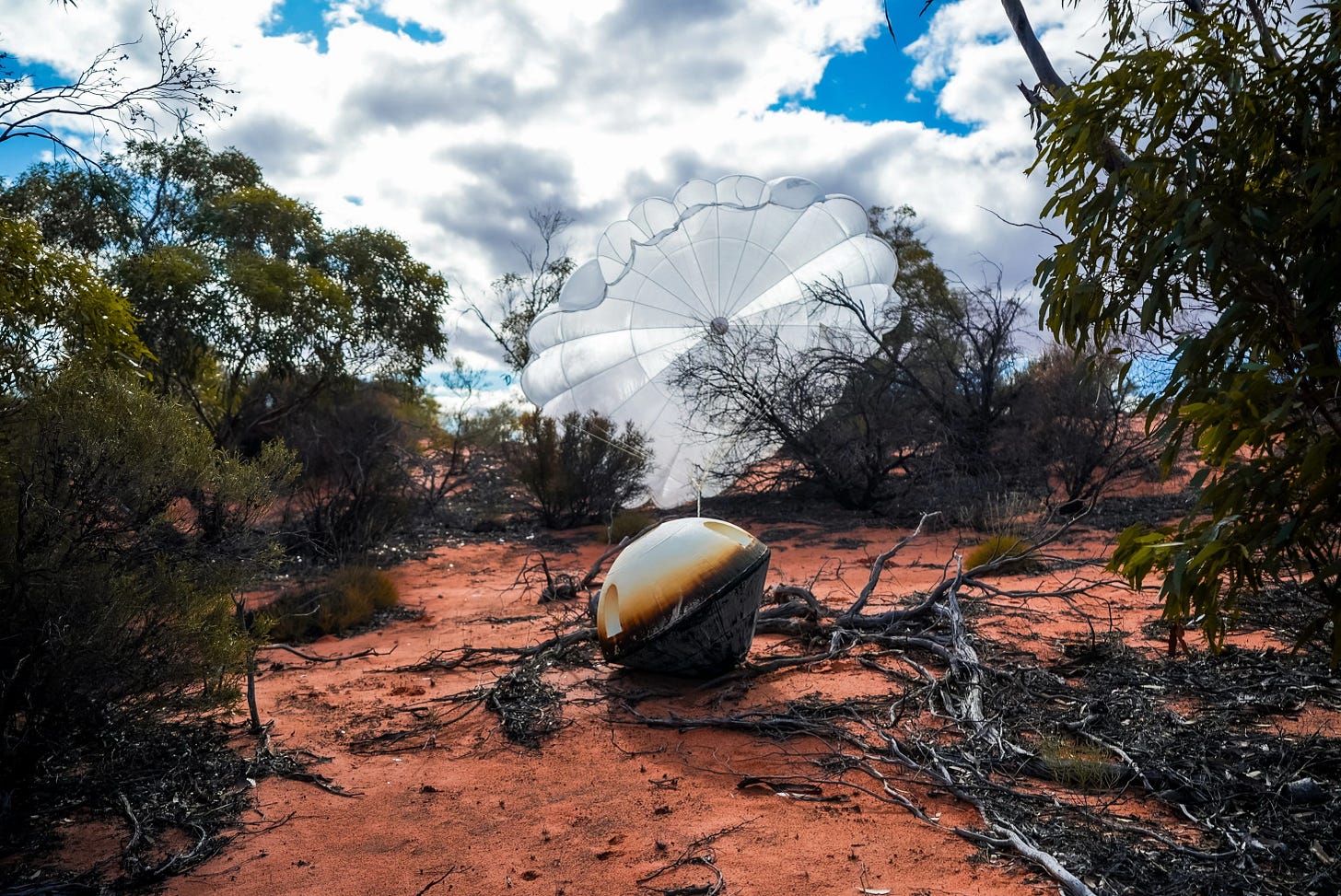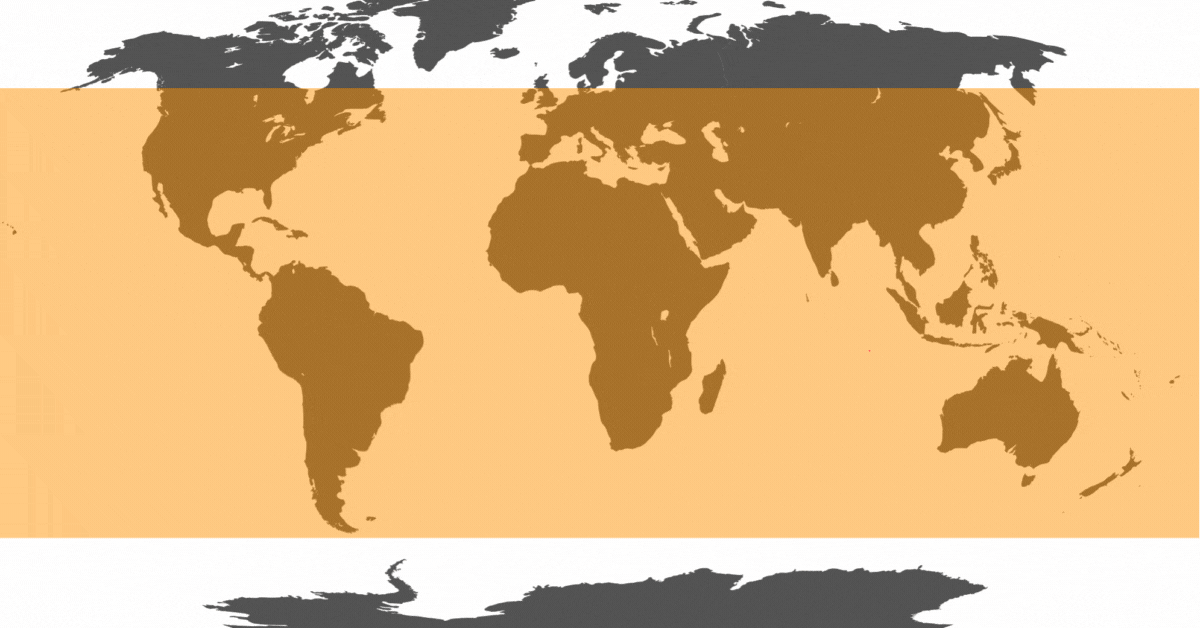This week we’ve seen two man-made space objects return to earth: the Kosmos 482 descent vehicle and Varda’s W-3. While the first spacecraft posed a danger to populations located between 52 degrees north and 52 degrees south latitude, this week’s episode focuses on the later, a space factory-slash-transportation technology with commercial and defense contracts.
On Wednesday, May 13, Varda’s W-3 mission came to a controlled and successful end, when the meter in diameter capsule, carrying an Air Force payload, touched down at 22:07 Eastern Daylight Time somewhere inside the 41,000-square-kilometer Koonibba Test Range, in Southern Australia.
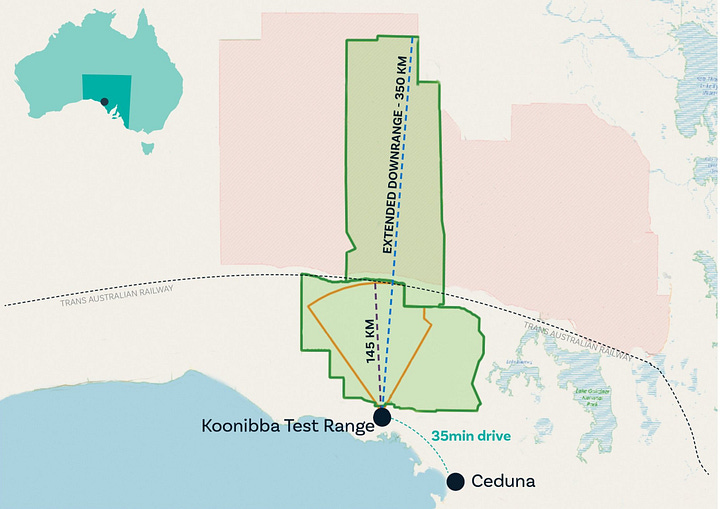
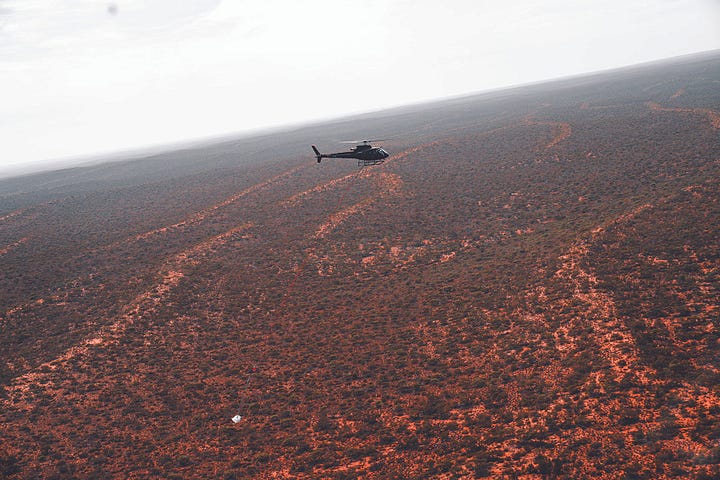
After launching on March 14, the W-3 spent 61 days in Low Earth Orbit, hosting an advanced navigation system called an Inertial Measurement Unit (IMU) developed by the US Air Force and Innovative Scientific Solutions Incorporated. The point of the mission was to provide a true high-hypersonic testbed to measure how well, or not, the IMU performed under the pressure of extreme g-forces of Mach 25 and above.
Varda’s business is to present researchers, scientists, and engineers from a myriad of sectors the opportunity to build, test, and experiment using materials as delicate as pharmaceutical grade crystals to ruggedized yet sensitive classified instruments and sensors that may end up as part of the Next Generation Missile Defense program… And to eventually make a profit for its investors, some of whom are Silicon Valley’s highest rollers.
Wednesday’s reentry event marked Varda’s third successful W-series mission in just under 15 months, and is the second this year. Varda launched its second mission, the W-2, aboard a SpaceX rideshare trip to orbit on January 14. That capsule included experiments and technology testing, including pharmaceutical processing; a Thermal Protection System Varda jointly developed with NASA; and an Optical Sensing of Plasmas in the Reentry Environment (OSPREE) sensor for AFRL.
The OSPREE sensor, a spectrometer, collected atmospheric data during the W-2’s high-hypersonic - at least Mach 25 - descent. It was the first time AFRL was able to use that sensor to gather data at speeds faster than Mach 15.
That high-Mach speed is part of Varda’s unique value proposition for the defense sector, as the company hopes to be tapped for tests related to the Next Generation Missile Defense (Golden Dome for America) program, currently steered by the Missile Defense Agency and the United States Space Force. The Congressional Budget Office released a report on May 5 that estimated the Department of Defense would need to spend anywhere from $542 billion to $831 billion on the space component over a 20-year period.
Technologies like ruggedized sensors for the proposed orbiting constellation of missile-defeating space-based interceptor vehicles will need to be developed and tested to deliver mission assurance for taxpayer dollars under the extremes of high-hypersonic atmospheric reentry.
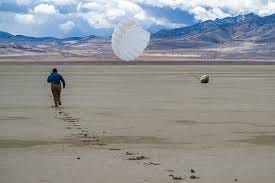
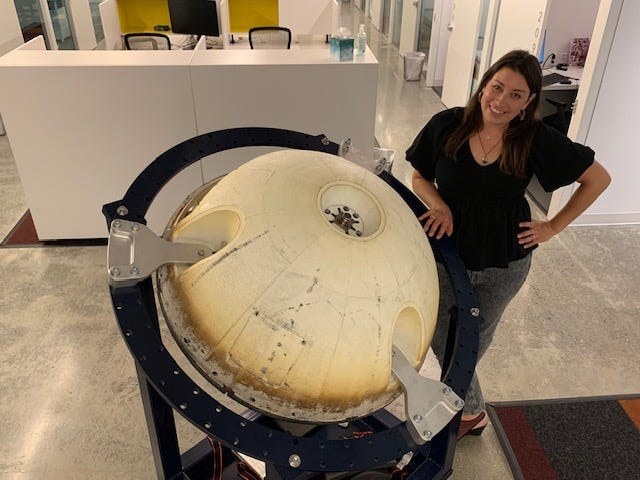
While many think of national security in terms of military force posture, I submit that national security also includes the nation’s ability to manage the effects of pandemics. Varda’s pharmaceutical business line is actually what has most caught my imagination, as it is an easily understood example of space manufacturing that has direct positive effects for humankind here on Earth.
Last year, Varda’s W-1 mission produced stable metastable Ritonavir crystals that could be critical to the efficacy of this antiviral drug’s capability to work with the human body to reduce the viral loads of HIV and hepatitis C patients. In 1998, two years after approval, the Federal Drug Administration ordered the temporary withdrawal of the pharmaceutical when it was found that the drugs crystals were unstable and in some cases insoluble - making it impossible for the human body to absorb and gain the lifesaving benefits.
In 1999, a reformulation of Ritonavir was approved, made available, and delivered life-sustaining effects.
Varda has raised at least $145 million and won a fistful of military contracts since it was founded in 2021. The company’s 120 kilogram W-series capsule (I’ve heard, but have not confirmed, that the “W” stands for Winnebago”) is paired with Rocket Lab’s Pioneer spacecraft. The Pioneer provides the capsule with “power, communications, propulsion, and attitude control,” and eventually delivers it to its de-orbit position.

… And one last word about Kosmos 482: This Soviet era descent vehicle was made to survive the atmosphere of Venus, about 100 times more pressurized than that of Earth. After 53 years in orbit, this nearly half ton hunk made an uncontrolled reentry on May 10, splashing down in the Indian Ocean at roughly 13:42 in the afternoon, just west of Jakarta, a city of more than 11 million people.
What’s in this episode
This week planet Earth is seeing two re-entries of man-made objects: first the uncontrolled, possibly life-threatening, Soviet-era Kosmos 482; and second, the W-3 - an example of the very controlled, defense and in some cases possibly life-extending, business case that is Varda Space Industries.
Who’s in this episode
Delian Asparouhov - Varda Space Industries’ co-Founder and President, and Partner at Peter Thiel’s Founders Fund
Muk Pandian - Varda’s Director of Strategic Partnerships and Advanced Concepts
Reading
“NASA Welcomes Norway as 55th Nation to Sign Artemis Accords” - NASA, May 15, 2025
“A Soviet-era spacecraft built to land on Venus is falling to Earth instead” - Stephen Clark, Ars Technica, May 8, 2025
“Press Club Statement on Air Force One Flying Without Wire Services” - National Press Club, May 12, 2025
Have a great Friday and weekend!
Ad Astra!
Laura Winter




